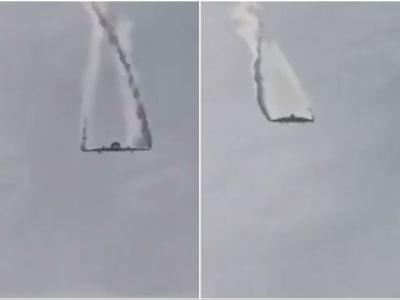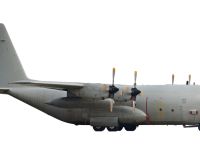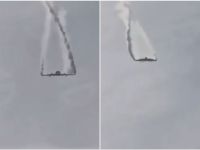Russian divers were poised Wednesday to begin the gruesome task of retrieving 118 bodies from the wrecked Kursk submarine after the country's navy chief gave the operation the green light.
After flying by helicopter to the Regalia diving platform in the Barents Sea, the nerve center of the operation, Admiral Vladimir Kuroyedov said he had left the exact timing to senior officers coordinating the mission.
"If the mission chief's view is that entering into the compartment poses a danger to the divers' lives, we must halt (the operation) without delay," Kuroyedov was quoted as saying by ITAR-TASS after returning to the naval port of Severomorsk.
A correspondent for state-run RTR television who traveled with the navy chief reported Kuroyedov as saying that the first divers would enter the rear of the sunken submarine around evening.
However, a fresh Arctic storm was forecast in the area late Wednesday, which could put a temporary halt to the operation, some 150 kilometers (90 miles) off Russia's northwest coast.
A Northern Fleet officer who asked to remain anonymous told AFP that the divers expected to find at least seven bodies in the submarine's eighth compartment.
Normally, an officer, two first mates, a second mate and three sailors would be stationed in the section. But another three submariners from the neighboring section might have taken refuge there as well, he added.
After cutting their way into the vessel, Russian and Norwegian divers spent the day preparing for the hazardous operation by covering the jagged metal inside the Kursk with protective material to avoid puncturing their diving suits.
A remote-controlled camera also probed the eighth compartment of the ill-fated Kursk, which was sent plunging to the seabed on August 12 by two onboard explosions with the loss of all 118 crew.
The camera was able to survey the entire section but there was poor visibility of 70 centimeters (2.1 feet), RTR said.
Meanwhile, a pump installed by the divers was removing debris and silt that might hinder their work.
Water samples taken over the weekend showed there was no radiation leaking from the Kursk's nuclear reactor.
Rear-Admiral Gennady Verich, head of the Russian navy's rescue operations, and Northern Fleet commander Admiral Vyacheslav Popov were directing the operation.
Two widows of officers who died near the front of the vessel, Irina Shubina and Olga Silogava, became the first women to visit the site of the tragedy, Wednesday, RTR reported.
Flown there with Kuroyedov, they cast flowers onto the sea on behalf of all the widows and mothers of the lost crew and gave home-baked cakes to the divers.
Three divers -- two Russians and a Norwegian -- at a time are descending to the wreck site out of a total team of 18.
Only the Russians are scheduled to go inside Kursk while the Norwegian diver is due to stay inside their bell-shaped submersible to monitor their work.
The operation to cut an opening measuring 1.5 meters by 75 centimeters (around five feet by two feet) in the Kursk's 40-centimetre (16-inch) thick inner-hull began on Saturday.
Another six such holes are to be cut elsewhere in the Kursk, which has been lying in 108 meters (355 feet) of water since it sank.
The cause of the accident remains a mystery, but the submarine was sent plunging to the bottom of the Barents Sea after a massive explosion that decimated its front section.
Kuroyedov said Tuesday he was "80 percent certain" that the Kursk had been sunk by a collision with another submarine.
Experts predict that only 20 to 30 percent of the bodies are likely to be recovered as little can remain of a crew that perished when a blast equivalent to some five tons of TNT tore through the front of the craft -- SEVEROMORSK (AFP)
© 2000 Al Bawaba (www.albawaba.com)









